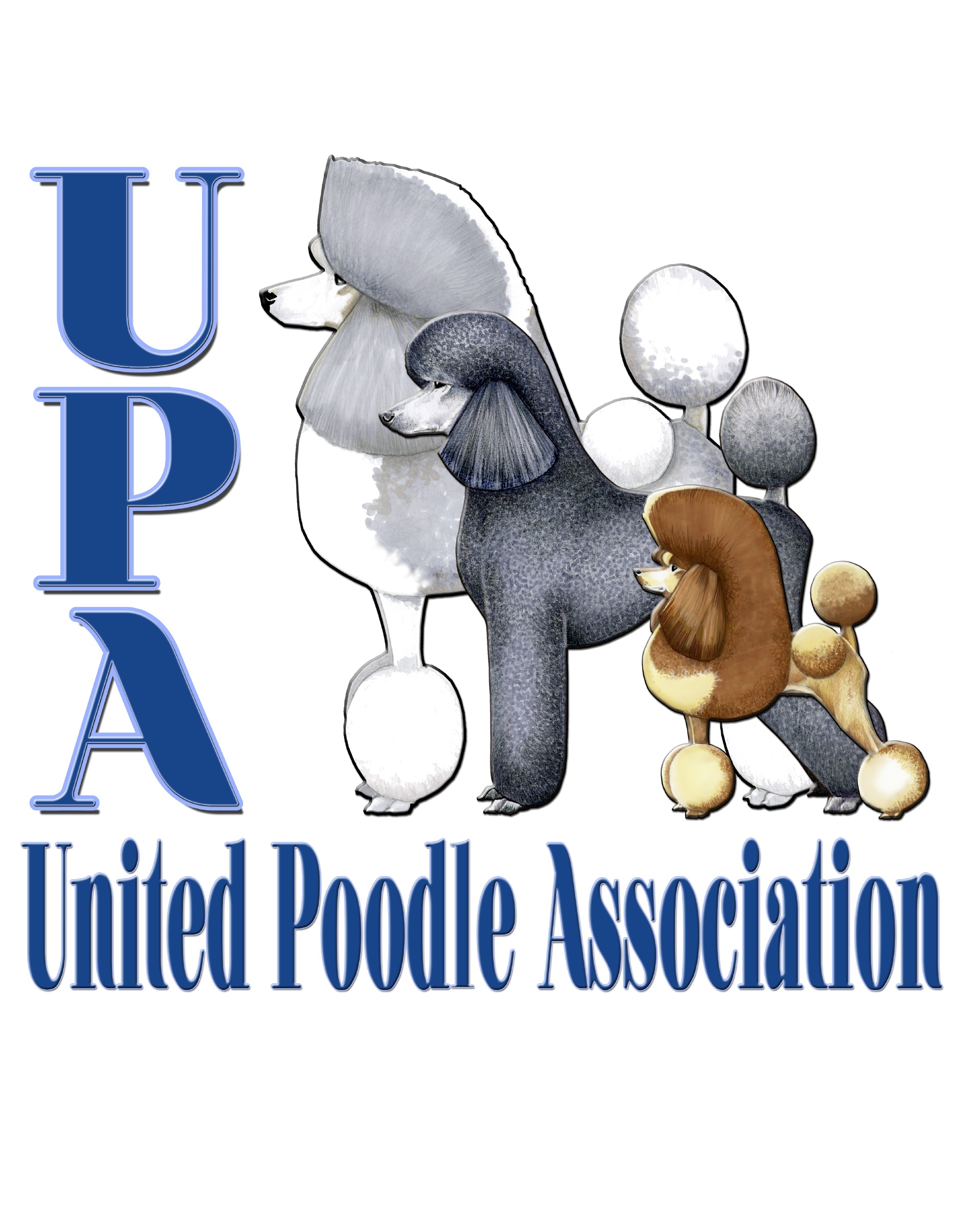Solid Colors
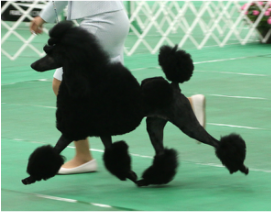
Black
Black should be dark inky in color with few to no white guard hairs. The points on any black dog will always be black.
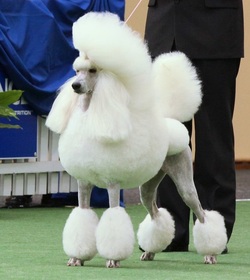
White
White poodles should be pure white at maturity. Younger dogs may show some creaming around the ears, tail and feet. This should white out as the dog ages. Black points are preferable.
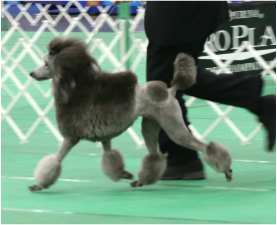
Silver
Silver is a progressive greying version of black and can range from a grey to a platinum silver shade. The points on a silver dog will always be black. Silver differes from blue in that it is thought to have two of the yet to be discovered progressive greying genes while blue has one.
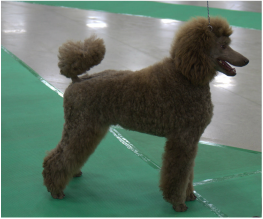
Brown
Brown should be a deep brown, but may fade with age. The points on any brown dog will always be brown.
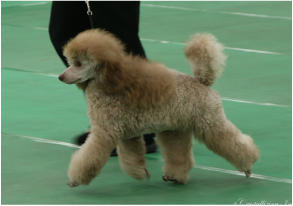
Silver Beige
Silver Beige and Cafe Au Lait are greyed versions of brown due to the progressive greying gene and range from a “cream in my coffee” color to a pale tan with a silver sheen. The dog’s points will always be brown due to the brown gene. Silver Beige differes from Cafe Au Lait in that it is thought to have two of the yet to be discovered progressive greying genes while Cafe Au Lait has one.
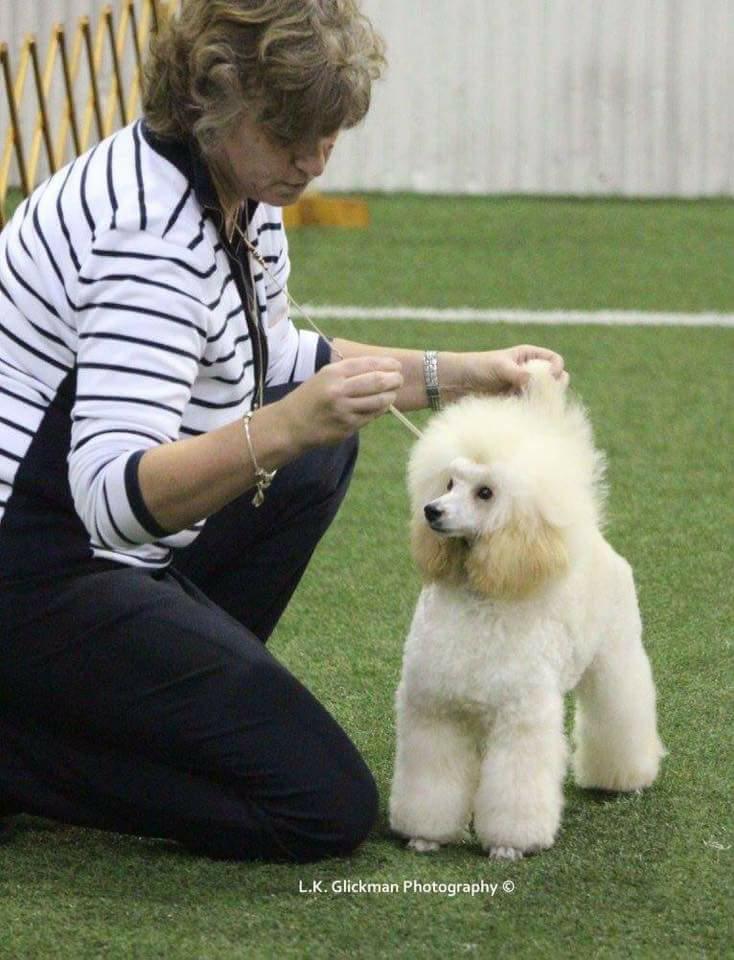
Cream
Cream is a lighter shade than apricot, but not quite white. Points should be black.
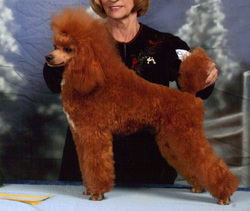
Red
Red can range from a very rich rust color to a rich deep mahogany color. This too may fade with age. Black points are preferable.
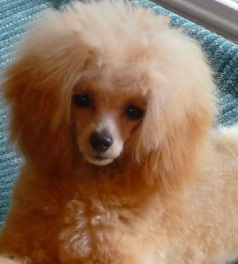
Apricot
Apricot poodles can range from a light creamy orange color to a rich distinctively apricot color. Black points are desirable, but brown are also acceptable.
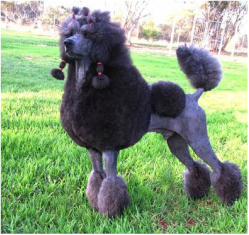
Blue
Blue is a progressive greying version of black and can range from a steel blue grey color to almost black. As blue puppies age they can have a brown cast to them, however genetically they are black dogs as their points will always be black. Blue differs from silver in that it is thought to have only one of the yet to be discovered progressive greying genes while silver has two.
Color Patterns
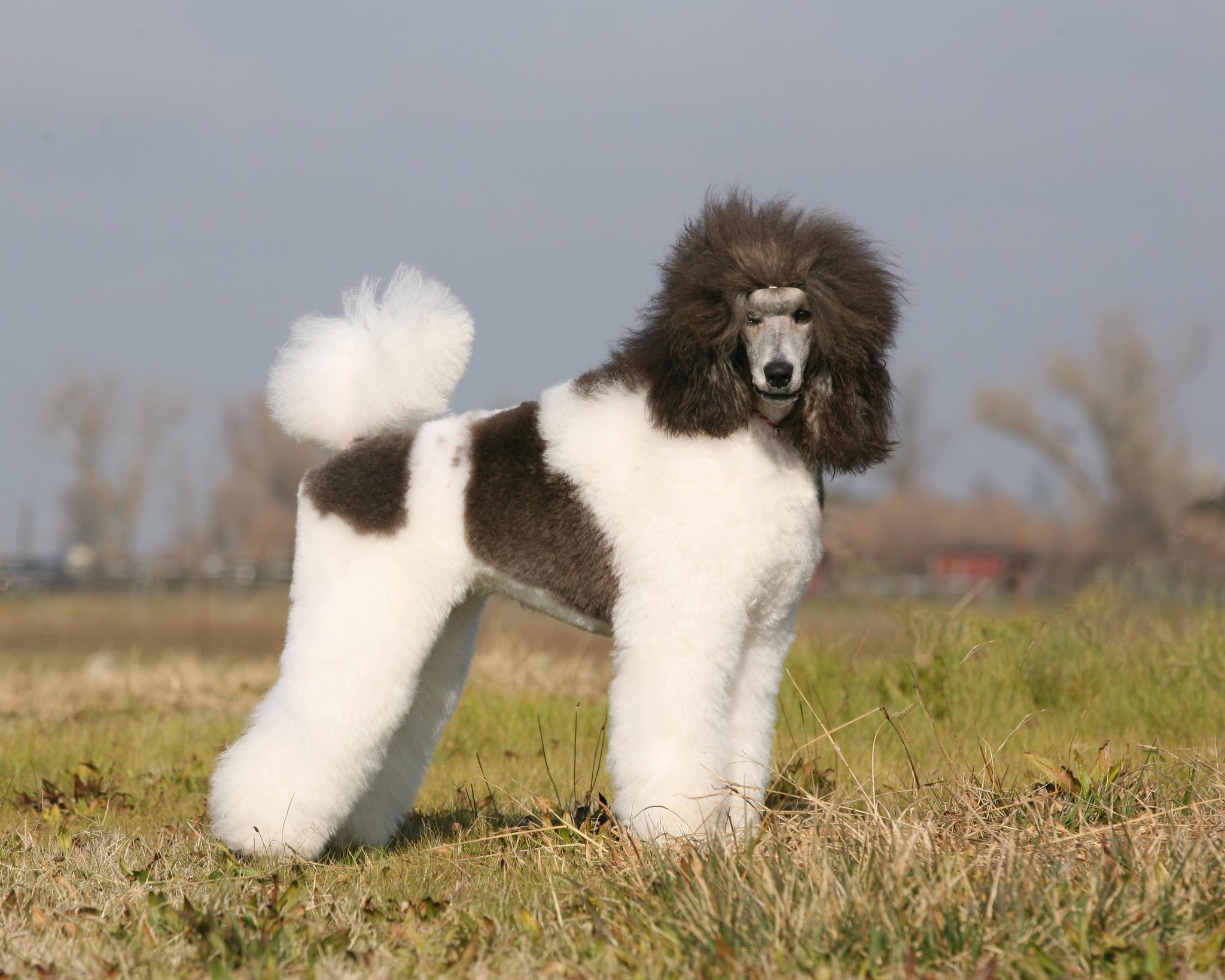
Parti-colored
Parti-colored poodles must have at least fifty percent white, with spots or patches of any other acceptable solid color. The head can be of a solid color but white muzzle, blaze, or white muzzle/blaze combination (preferably symmetrical) is equally acceptable. Full or partial saddles are acceptable, as long as they do not exceed the color proportion, but are not preferred. Ticking in the white of the coat is acceptable but not preferred.
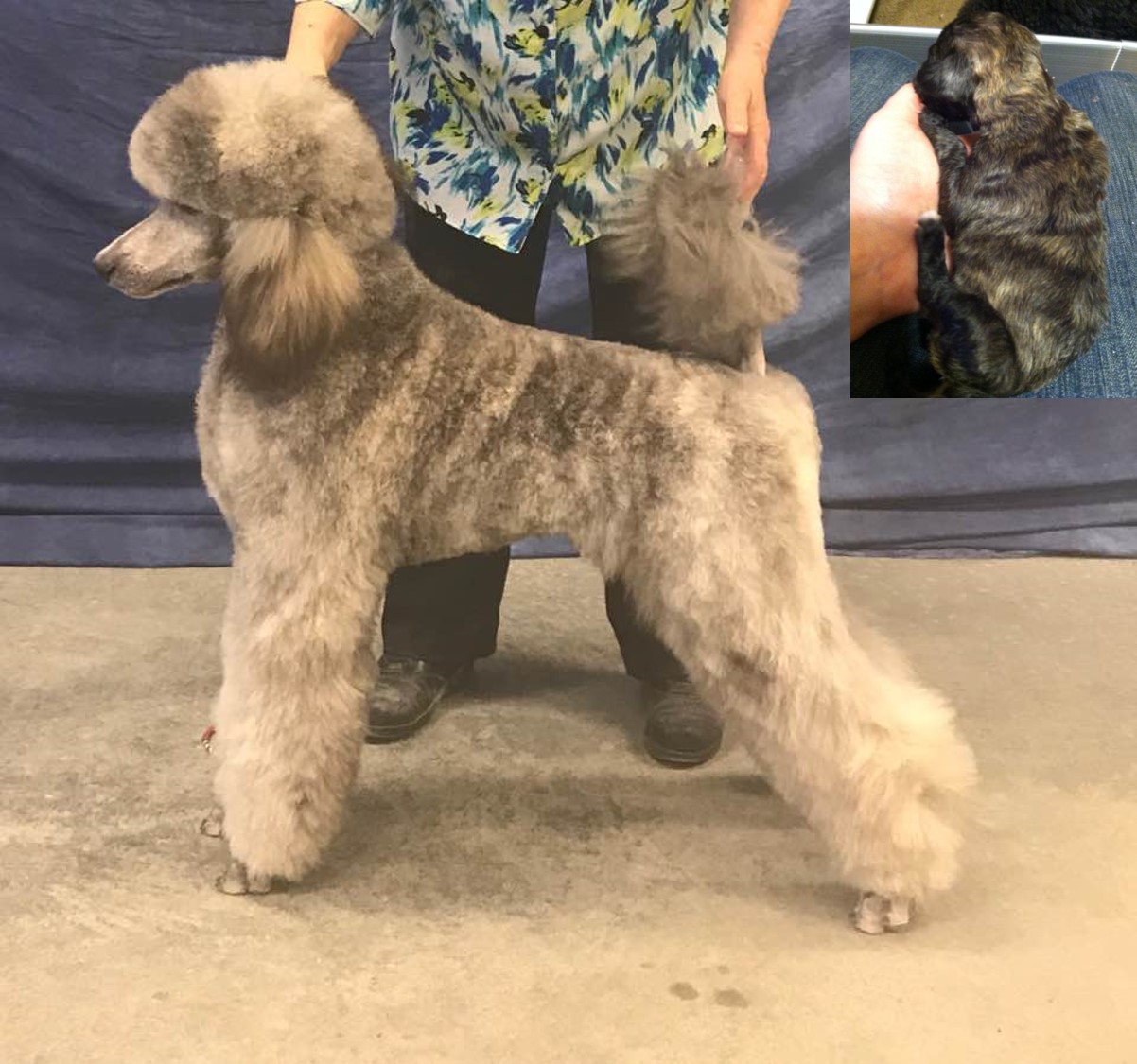
Brindle
Brindle is fine streaked or striped effect or pattern of black or tan hairs in combination of accepted colors listed above. Brindle can also be combined with phantom, abstract and parti patterns.
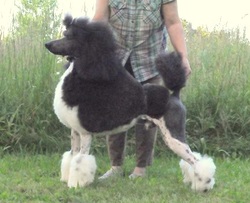
Tuxedo
Tuxedo is not a UKC term, and it is a parti-colored poodle. However, it is generally described as a white bib on the chest, that may or may not wrap all the way around the dog’s neck, a white belly that “should” touch the bib, making a continuous white area and white that extends from the belly down to the front and hind legs and paws.
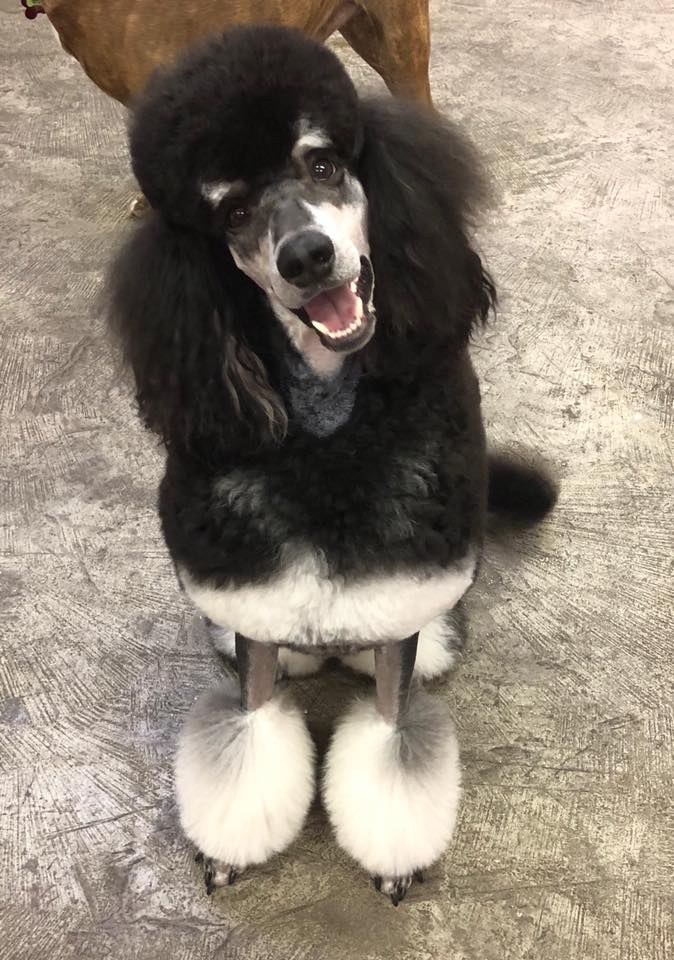
Phantom
Phantom is a solid base color with sharply defined markings of a second color appearing above each eye, on the sides of the muzzle, on the throat and forechest, or in a chin and forechest bowtie pattern as well as on all four legs and feet, and below the tail. A phantom without clearly defined face markings or one that presents with its whole face colored in the second color is acceptable, as long as it maintains all the other specified body markings. Any combination of acceptable colors is allowed. Phantom can also be combined with brindle, abstract and parti patterns.
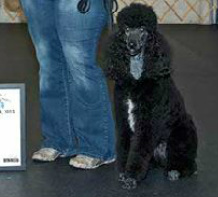
Abstract
Abstract is a pattern with less than fifty percent white, with the remaining percent any other acceptable solid color. Among AKC show people, this pattern is also known as a Mismark. It frequently appears in Parti lines, but is not necessarily a guarantee that a dog has Parti genes in it’s pedigree.
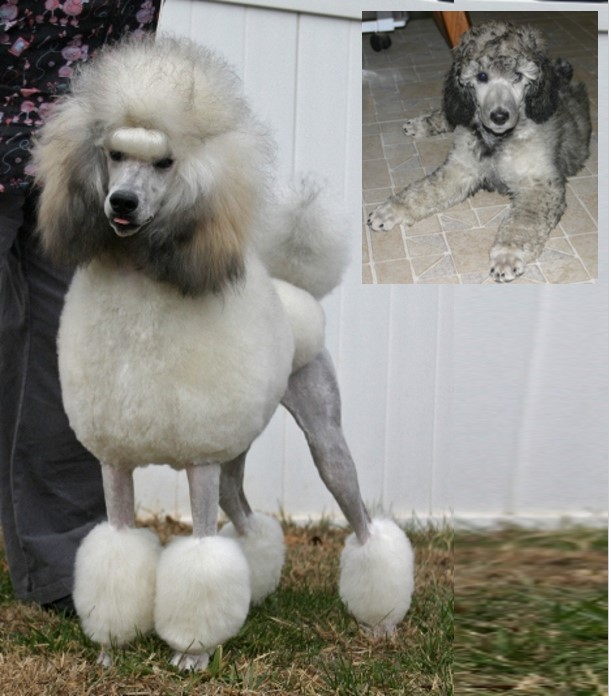
Sable
Sable is a coat represented by black-tipped hairs on a background of any solid color, with no particular pattern/location designated for such hairs. Sable can also be combined with abstract, brindle and parti patterns.
***MERLE IS NOT PUREBRED***
Merle is NOT a naturally occurring poodle color and indicates another breed was used and papers falsified in the pedigree. It is considered a mixed breed, NOT a purebred poodle. It is a disqualification in UKC and not allowed registration.
The United Poodle Association [UPA] reserves the right to decide in its absolute discretion what material of any nature will be published to this website. The UPA reserves the right to refuse to publish any material, to edit and/or change the format of any material, to place conditions on the publication of any material, and accepts no responsibility for error in the publication of any material. The opinions expressed in any material published herein are not necessarily those of the UPA. While the information in this web site is believed to be true and accurate, neither the Officers, authors or members of the UPA can accept any legal responsibility for any errors or omissions that may have been made. The UPA name and logos are the exclusive property of the United Poodle Association. In addition, any images and content from the former Multi-Colored Poodle Club of America and The United Poodle Breeders Association are also exclusive property of the United Poodle Association which is a merger of the two organizations. Reproduction of any images or text contained within all media produced by the United Poodle Association cannot be reproduced without expressed written permission.
Copyright © 2018 United Poodle Association

